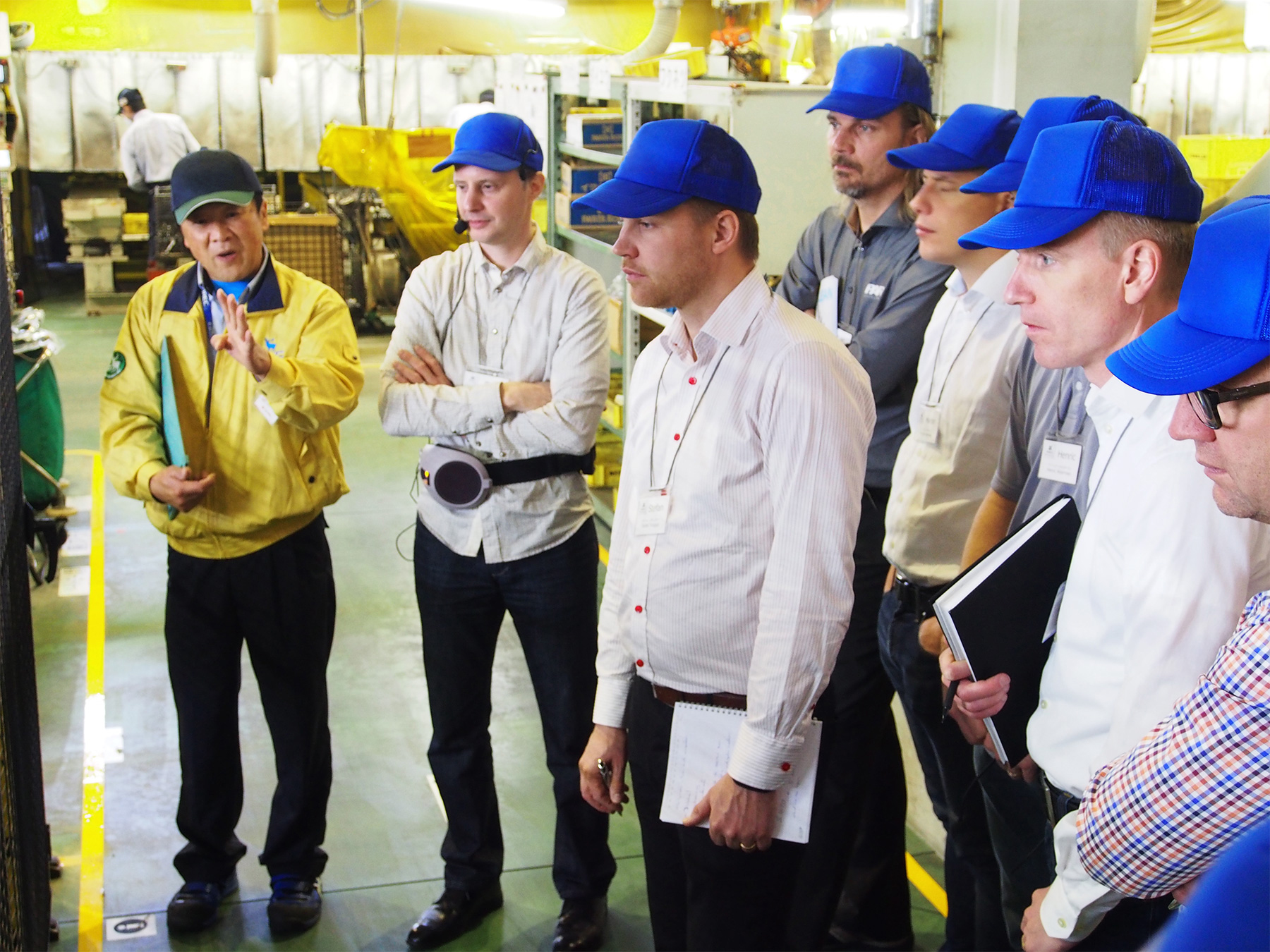Visual management and the team meeting

Visual management is linked to and forms a part of 5S. Visual management allows us to picture and then effectively attend to the performance in an area. It’s a tool which, through use, creates a point of power from which to focus on parts of a business in a manner that encourages communication between people.
A place of focus
Typically, when I am implementing visual management in a business, say in a factory, I separate it slightly from 5S. I put the focus on communication boards and team metrics boards. These boards are visualisations of the performance KPIs of the team. They are the hub of the team’s communication with one another, as well as with management- a central point where people gather every day to discuss performance and how they can make improvements. In an office environment, I like to use visual boards as well, as it is a powerful driver of collaboration.
A visual management board is primarily looking for two things- leading indicators and lagging indicators. These are displayed through green or red in the metrics charts. If a metric is green- providing we’ve set it up accurately- then that is good. If it’s red, then that’s an opportunity to improve. Some people say “celebrate the red”, because it’s an opportunity for us to get better at something. These visualisations of a team’s performance KPIs are an effective tool for generating and supporting focused conversations around the metrics.
Areas of analysis
When you are setting up a visual management board you are looking to measure things around
- people and safety
- quality
- delivery to customer
- bottom line cost metrics or productivity metrics (that can help teams gain insights)
A hub of communication
A visual management board is not only a tool for measurement. It cultivates an approach to communication that has a degree of professional tension. We use visual management boards to promote acceptance of issues or problems in a process. They provide a forum in which to address things that are not going well as they don’t allow us to brush or gloss over issues. If there is a problem, we can see it and we’re going to talk about it. We’re not going to let it alone- we’re going to try to establish what the root cause is. People are encouraged to ask why in order to eliminate the red.
Visual management boards not only support questioning. Visual management boards generate proactive discussions, providing opportunities to celebrate successes. They are an opportunity to acknowledge the green in the metrics. They help to identify the wins of the team, or when someone has gone that extra mile.
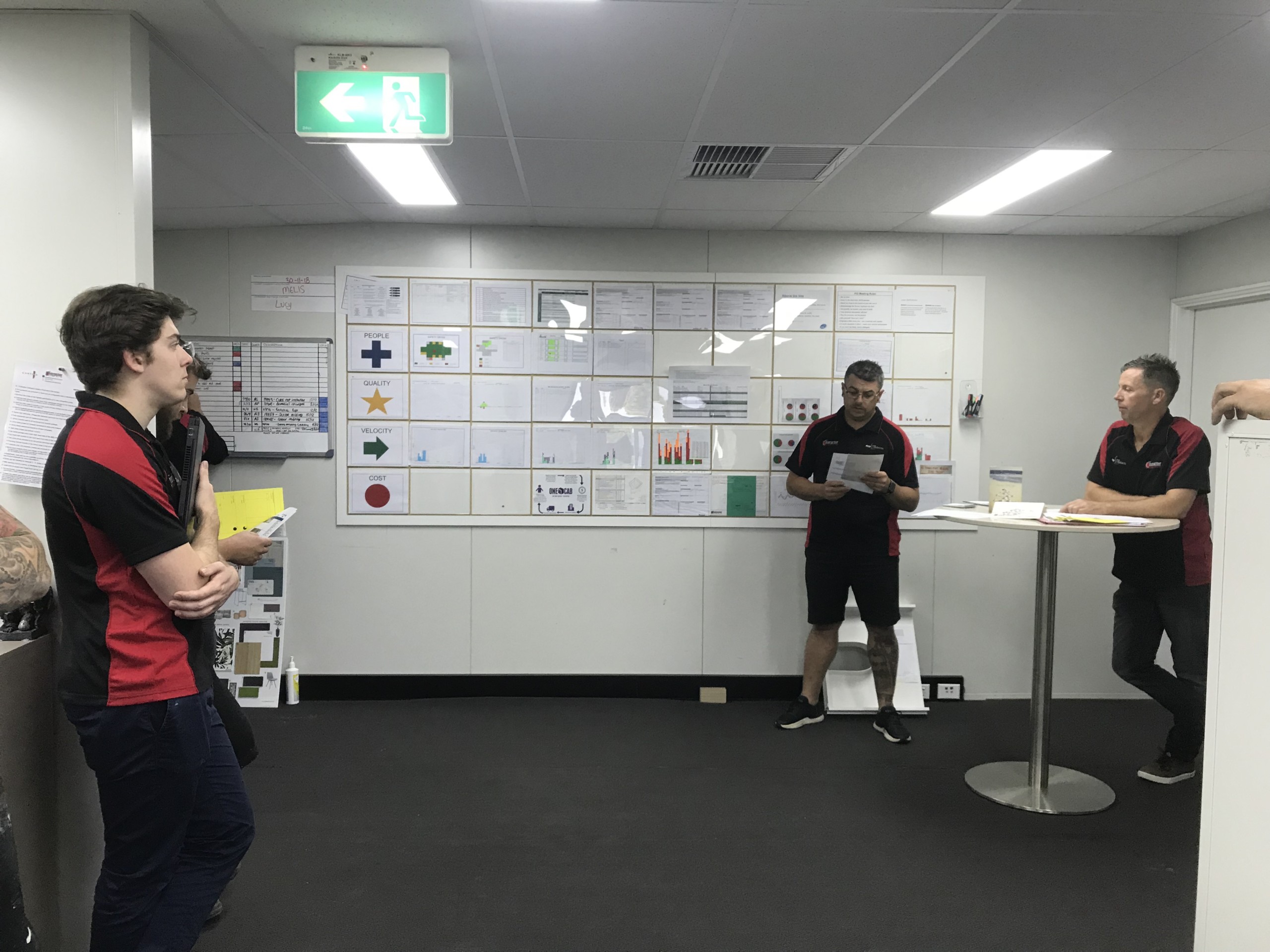
Hub of communication
Rules of the game
When a team comes together around their visual management board for their team huddle or toolbox meeting there are a few rules-
- Everybody is standing up
- Everybody shows up on time
- The meeting goes for 15 minutes
- We acknowledge the greens and challenge the reds
- We always play the ball, not the person (criticise the process, not the individuals who may be in the process)
- We take lengthy discussions offline
Why go offline?
Because of the nature of the toolbox meetings we can only discuss the red using ‘3-minute management’. This is a loose term I would use- but what does it mean?
Picture this- we’ve got red on the board. We spend 30 seconds and we discuss what the current condition is- we’ve got red- what’s the situation, what’s has been our immediate countermeasure during a stop to fix?. We expect to see the team has some answers as to why they’ve got the red and that actions are already in place.
Then we spend 3 minutes considering the situation, seeing if it’s an easy or quick win. We discuss what actions are currently being taken, how we are dealing with it and if we have got to the root cause of the problem- as opposed to just treating the symptom. If we know that things are heading in the right direction from there we can move on and discuss that red again tomorrow to ensure that it’s been fixed.
However, if the red is going to mean we need to have a longer conversation about something, we’ll take that offline. Usually, the facilitators of that meeting will establish who’s going to be involved and we’ll do some problem solving around the issue.
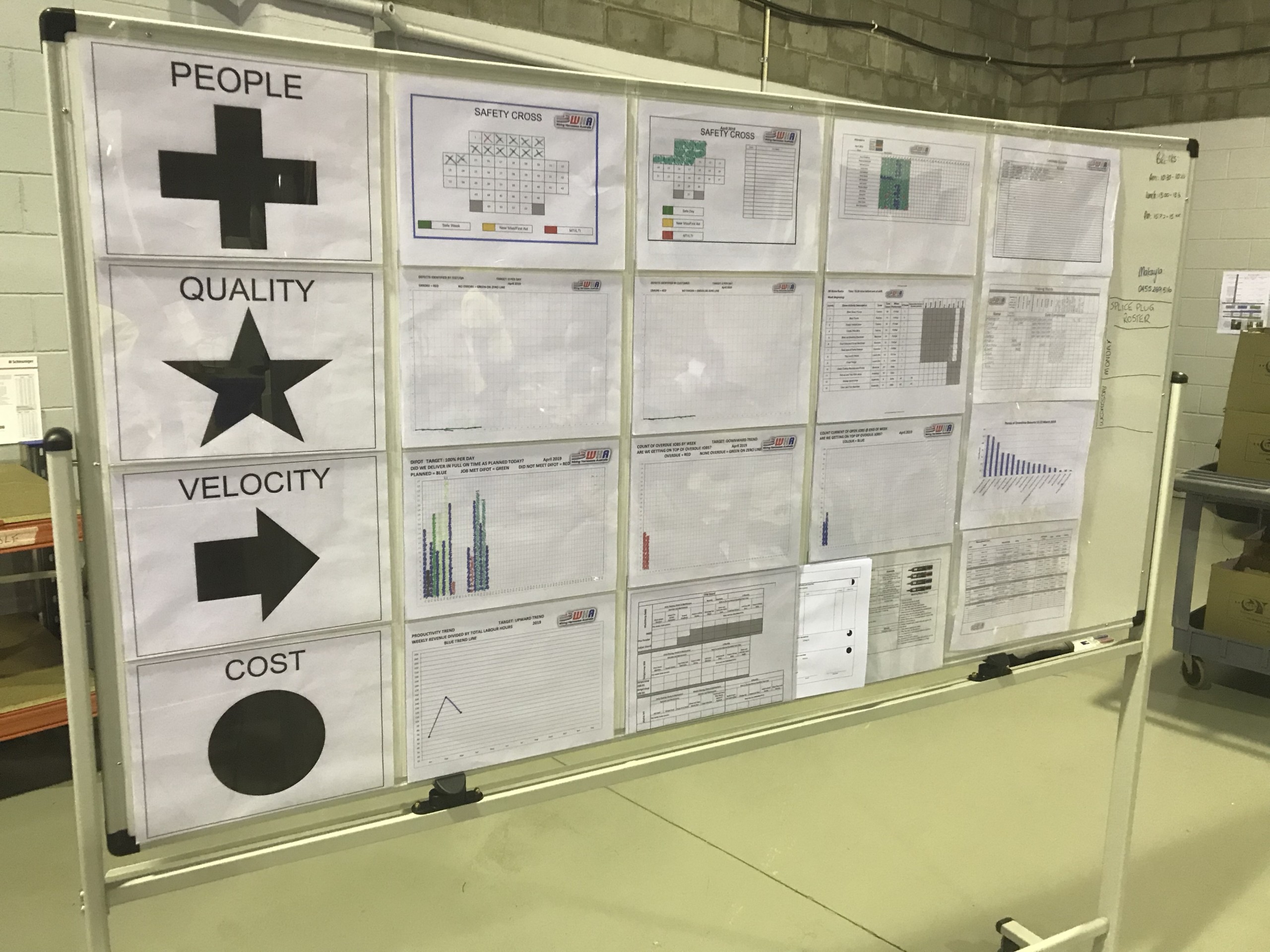
Purposeful visual management allows root cause problem solving
The idea of the visual management tool is that half the board addresses and discusses the metrics, while the other half is about problem-solving, particularly the “we’ll take it offline” problem-solving. The problem-solving half of the visual management board, which can be the other side of a visual board on wheels, but is usually a separate board in the visual management area, is about root cause analysis and problem-solving with a scientific method to get us there. So it’s very specific and very well laid out in terms of how problems are resolved and that means that what we can get to the true root cause of a problem rather than just getting to a symptom and saying “well that’s the problem” and fixing the symptom and not actually fixing the root cause.
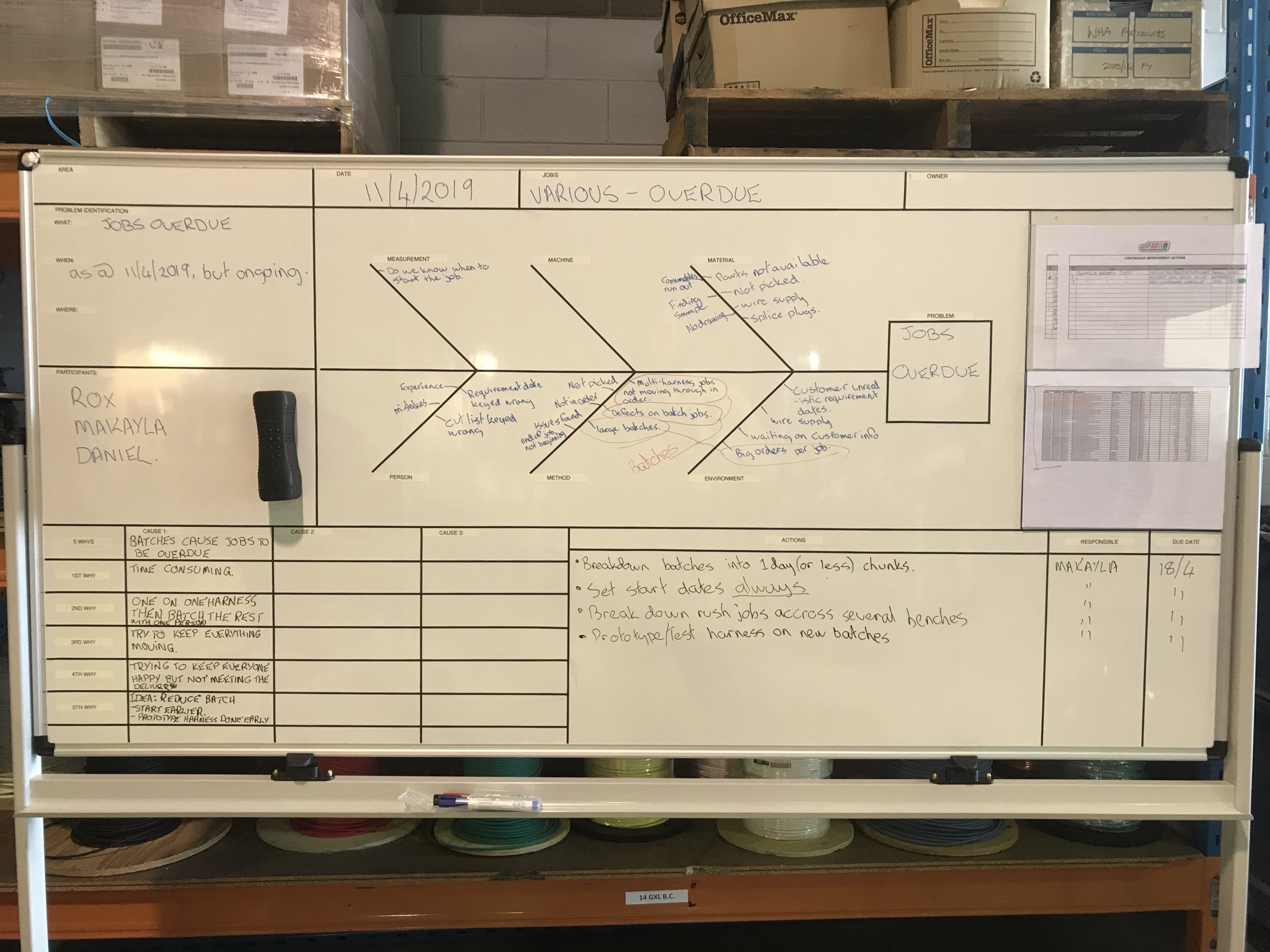
Gains from visual management
The application of visual management through toolbox meetings provides significant insights and generates positive outcomes such as
- Efficient identification of challenges. It’s a very powerful point within an office, factory or workshop to show, at a glance, exactly what is not going right
- The promotion of a positive culture within the work site
- Engagement of all staff by the process of conducting the meeting
- Adherence to controlled processes that stimulate proactive responses
- Generation of large amounts of verbal, face to face communication- a real win, with face to face communications often missing due to our focus on technology
- Direct communications with team leaders as a result of structured conversations- after a quick scan of the board we can see exactly what is happening in that part of the business, enabling us to focus in our very next conversation with the team leaders in that area
- A daily touch base with the team that drives efficient conversations
Visual management is a highly effective tool for generating a strong picture on which to focus and manage your business- your people, your product and service while maintaining a clear view on productivity and costs.
Reach out if you want to know more about how to create a culture of continuous environment in your workplace.
Check out our Capability Training options.
or
Book a discussion to find out how we can help your business.
Much Respect,
Daniel
Subscribe for updates
We provide free updates and advice regularly to help you improve your business and leadership skills, and for exclusive content there is a paid subscription too!
Follow us on YouTube
Our YouTube channel is a must for Leaders in business who want to empower their teams and improve their processes. You'll find plenty of our current thinking there
Build your Capability with our Members Program
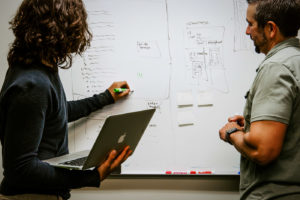
We do consulting differently, in that we believe in building your capability to improve - we want to provide you with the secrets to success, not keep it all to ourselves! Our exclusive Member Program coaches you to be a great Leader, to empower your people to drive improvement, and identify large gains in employee engagement, quality and performance.
Talk to a consultant
We love to have a chat. We also like to make sure we have time just for you. You can book a chat and we can discuss your continuous improvement journey. We are happy to provide as much obligation-free advice as we can during the call, including what would be the recommended next steps for you to take.
